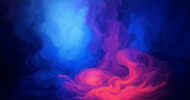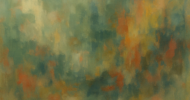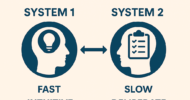by John Gever
“Jersey Shore” wannabes beware: some people crave the indoor tanning experience so much that it qualifies as an addiction, researchers said.
Among 229 college students completing a survey, 39.3% met DSM-IV criteria for addiction, reported Catherine E. Mosher, PhD, of Memorial Sloan-Kettering Cancer Center in New York City, and Sharon Danoff-Burg, PhD, of the State University of New York at Albany, in the April issue of Archives of Dermatology.
Participants who were judged to be problem tanners admitted to such classic addictive behaviors as trying unsuccessfully to cut down, feeling annoyed when they were told they were indulging too much, and skipping work or other scheduled activities in order to use tanning beds.
“Tanning may be conceptualized as an addictive behavior for a subgroup of individuals who tan indoors,” Mosher and Danoff-Burg wrote, in line with but also extending earlier studies.
For example, a 2007 study of college students found that 28% met a different set of criteria for addiction, contained in the Cut-Down, Annoyed, Guilty, Eye-Opener (CAGE) questionnaire, originally developed to identify alcoholics.
Mosher and Danoff-Burg, using a modified form of CAGE, found that 30.6% of their sample met its criteria.
They also found that the likelihood of being a full-fledged tanning addict was associated with higher-than-average use of tanning beds, use of alcohol and marijuana, and moderate to severe anxiety symptoms.
The study was conducted at the Albany University campus, where 421 students were recruited from the school’s psychology department research pool. Slightly more than two-thirds (67.5%) were female.
Participants were asked to complete a questionnaire combining the CAGE and DSM-IV criteria for addiction, modified to focus on use of indoor tanning beds. Their skin type was also rated according to its susceptibility to burning and tanning.
Of the 421 students who agreed to participate, 229 had used indoor tanning facilities.
Of those, 50 met the addiction criteria for both instruments and were considered the tanning addicts in subsequent analyses.
Twenty were positive for addiction according to CAGE but negative on the DSM-IV criteria, and 40 met the DSM-IV criteria but not those in CAGE. Mosher and Danoff-Burg classed these 60 participants as having “addictive tendencies.” A total of 119 were negative on both and were categorized as “not addicted.”
Among the 50 tanning addicts, 78% said they had tried to cut down but were still tanning, compared with 22% of those with addictive tendencies and 5% of the nonaddicts. Another 78% of the addicts said they felt guilty about their tanning habit, and 26% admitted to wanting to get into a tanning bed when they woke up in the morning.
Other behaviors reported by large numbers of the tanning addicts:
* 54% said they needed to spend increasing time in the tanning bed to achieve the perfect skin tone
* 94% feared their tan would fade if they spent less time tanning
* 40% said they had tried other activities but they were less rewarding than tanning
* 24% reported missing a scheduled activity, including work, to use a tanning bed
All the tanning addicts said they believed tanning beds can cause skin cancer, and 98% said this knowledge kept them from using tanning beds even more.
The mean number of self-reported days spent tanning in the previous year was 40 among the addicts versus 28 for the addictive-tendency group and 13 for the nonaddicts.
Few addicts (12%) said that, when they went to a tanning salon, they usually spent more time than they planned.
Participants were also quizzed about their use of other drugs and symptoms of anxiety and depression. Mosher and Danoff-Burg found an odds ratio of 1.40 that tanning addicts relative to nonaddicts would also use alcohol (95% CI 1.07 to 1.84). The odds ratio for marijuana use among addicts was 1.33 (95% CI 1.02 to 1.74).
Stimulant use also appeared more frequent in the tanning addicts, but it failed to reach statistical significance because of small numbers (OR 1.47, 95% CI 0.75 to 2.85).
There was no particular relationship between skin type and the likelihood of tanning addiction.
Moderate to severe anxiety symptoms, as measured on the Beck scale, were seen in 28% of tanning addicts, 20% of the addictive-tendency group, 15% of the nonaddicts, and 12% of the never-users. There was no hint of correlation with depression symptoms.
“If associations between affective factors and indoor tanning behavior are replicated, results suggest that treating an underlying mood disorder may be a necessary step in reducing skin cancer risk among those who frequently tan indoors,” Mosher and Danoff-Burg wrote.
“Researchers have hypothesized that those who tan regularly year round may require more intensive intervention efforts, such as motivational interviewing, relative to those who tan periodically in response to mood changes or special events,” they added.
They cited several limitations to the study: its cross-sectional design, reliance on self-reporting, and lack of geographic and sociodemographic diversity.
John Gever is a MedPage Today Senior Editor.
Originally published in MedPage Today. Visit MedPageToday.com for more dermatology news.





















![Rethinking medical education for a technology-driven era in health care [PODCAST]](https://kevinmd.com/wp-content/uploads/The-Podcast-by-KevinMD-WideScreen-3000-px-4-190x100.jpg)
